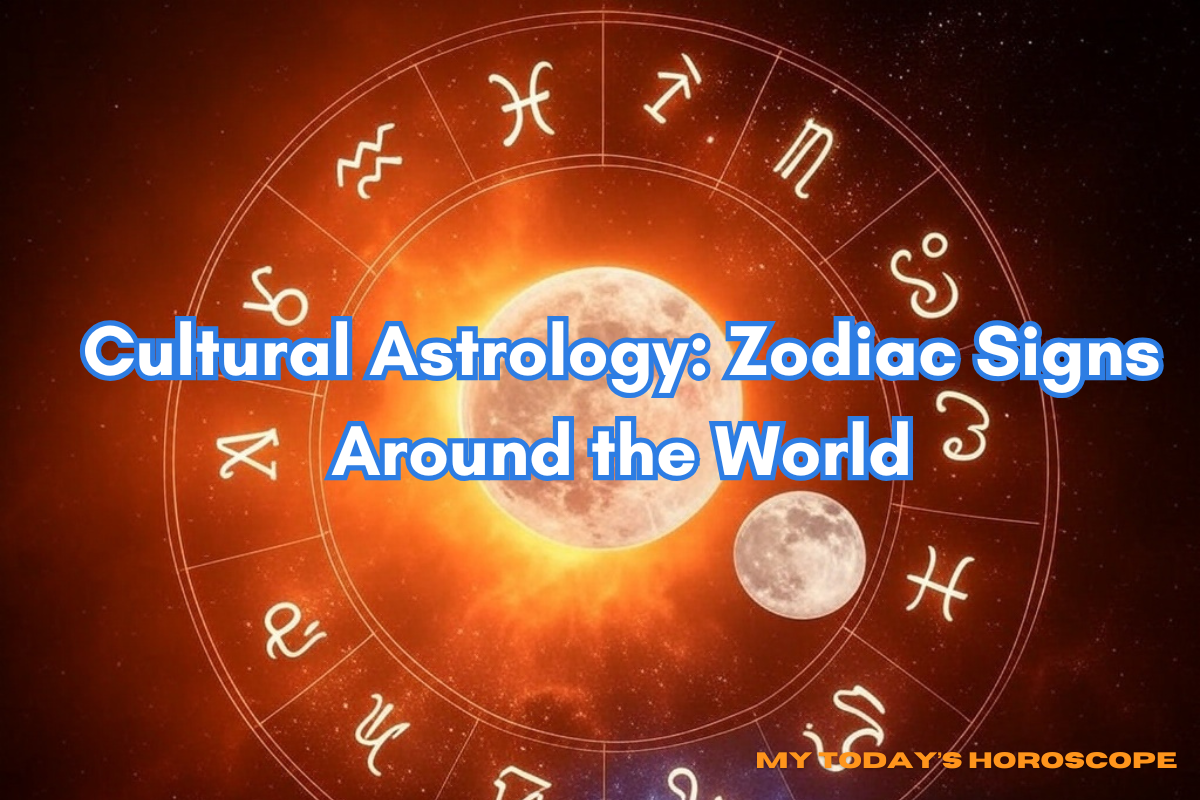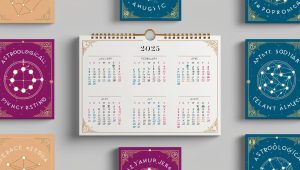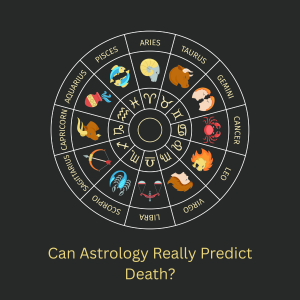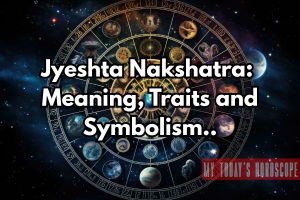Astrology, the ancient practice of interpreting celestial bodies and their influence on human affairs, has captivated humanity for thousands of years. While the Western zodiac—with its twelve sun signs like Aries, Taurus, and Gemini—may be the most familiar to many, it is just one thread in a rich global tapestry of astrological traditions. Cultural astrology explores how different societies have gazed at the same stars and planets yet woven unique systems of meaning, reflecting their histories, environments, and philosophies. From the animal cycles of the Chinese zodiac to the tree-based signs of the Celtic tradition, these diverse zodiac systems offer distinct perspectives on personality, destiny, and our connection to the cosmos. In this in-depth exploration, we will journey through some of the world’s most prominent and lesser-known astrological systems, uncovering their origins, structures, and enduring significance.
The Universal Roots of Astrology
Before diving into specific zodiac systems, it’s worth considering what unites them: a shared human impulse to find patterns in the sky and meaning in our lives. Astrology likely began with early civilizations observing the stars to track time, predict seasons, and navigate vast landscapes. Over millennia, these observations evolved into complex systems that blended astronomy, mythology, and spirituality. Whether in Mesopotamia, China, India, or Mesoamerica, people looked upward and saw not just stars but stories—narratives that shaped their understanding of fate, character, and the divine.
Each culture’s zodiac system reflects its worldview. The Western zodiac ties its signs to seasonal shifts, the Chinese zodiac to lunar cycles and elemental forces, and the Mayan system to a sacred calendar of cosmic rhythms. These differences highlight how astrology is both universal and deeply local, a mirror to humanity’s diversity and creativity. In this article, we’ll explore six major systems—the Western, Chinese, Vedic, Mayan, Celtic, and Native American zodiacs—delving into their histories, mechanics, and the traits they ascribe to individuals, before reflecting on their modern relevance and universal appeal.
The Western Zodiac: A Legacy of Stars and Seasons
Origins and Evolution
The Western zodiac, also known as the tropical zodiac, is the foundation of astrology for much of the modern world. Its origins stretch back to ancient Mesopotamia around 3000 BCE, where Babylonian priests charted the heavens and divided the ecliptic—the sun’s apparent path through the sky—into twelve equal segments. Each segment aligned with a constellation, such as Scorpio or Virgo, and was imbued with symbolic meaning. This system traveled westward, refined by the Greeks who added mythological layers (think Aries the ram from the Golden Fleece) and later adopted by the Romans, whose Latin names for the signs endure today.
Unlike some systems tied to the stars’ actual positions, the Western zodiac is based on the seasons, starting with Aries at the spring equinox (around March 21). This “tropical” approach means it remains fixed to Earth’s annual cycle rather than shifting with the precession of the equinoxes—a slow wobble in Earth’s axis that has misaligned the signs with their original constellations over millennia.
The Twelve Signs
The Western zodiac comprises twelve signs, each spanning roughly 30 days and linked to specific traits, elements (fire, earth, air, water), and modalities (cardinal, fixed, mutable). Here’s a detailed look:
- Aries (March 21 – April 19)
- Symbol: The Ram
- Element: Fire
- Modality: Cardinal
- Traits: Bold, energetic, and pioneering. Aries individuals are natural leaders, often impulsive but fiercely determined.
- Taurus (April 20 – May 20)
- Symbol: The Bull
- Element: Earth
- Modality: Fixed
- Traits: Reliable, sensual, and grounded. Taureans value stability and comfort, with a stubborn streak.
- Gemini (May 21 – June 20)
- Symbol: The Twins
- Element: Air
- Modality: Mutable
- Traits: Curious, adaptable, and communicative. Geminis thrive on variety and intellectual exchange.
- Cancer (June 21 – July 22)
- Symbol: The Crab
- Element: Water
- Modality: Cardinal
- Traits: Nurturing, intuitive, and emotional. Cancers are deeply tied to home and family.
- Leo (July 23 – August 22)
- Symbol: The Lion
- Element: Fire
- Modality: Fixed
- Traits: Charismatic, confident, and creative. Leos shine in the spotlight and inspire others.
- Virgo (August 23 – September 22)
- Symbol: The Virgin
- Element: Earth
- Modality: Mutable
- Traits: Analytical, practical, and detail-oriented. Virgos excel in organization and service.
- Libra (September 23 – October 22)
- Symbol: The Scales
- Element: Air
- Modality: Cardinal
- Traits: Diplomatic, charming, and balanced. Libras seek harmony and beauty in all things.
- Scorpio (October 23 – November 21)
- Symbol: The Scorpion
- Element: Water
- Modality: Fixed
- Traits: Intense, passionate, and transformative. Scorpios delve into life’s mysteries.
- Sagittarius (November 22 – December 21)
- Symbol: The Archer
- Element: Fire
- Modality: Mutable
- Traits: Adventurous, philosophical, and optimistic. Sagittarians chase freedom and truth.
- Capricorn (December 22 – January 19)
- Symbol: The Goat
- Element: Earth
- Modality: Cardinal
- Traits: Ambitious, disciplined, and pragmatic. Capricorns build lasting legacies.
- Aquarius (January 20 – February 18)
- Symbol: The Water Bearer
- Element: Air
- Modality: Fixed
- Traits: Innovative, independent, and humanitarian. Aquarians envision a better future.
- Pisces (February 19 – March 20)
- Symbol: The Fish
- Element: Water
- Modality: Mutable
- Traits: Compassionate, dreamy, and intuitive. Pisceans connect deeply with the unseen.
Beyond the Sun Sign
While the sun sign—determined by your birth date—is the most well-known aspect, Western astrology also considers the moon sign (emotions), rising sign (outward persona), and the positions of planets in twelve “houses” that govern different life areas (e.g., career, relationships). This creates a complex natal chart, offering a nuanced portrait beyond the sun sign alone.
The Western zodiac’s myths—like Hercules battling the Nemean Lion for Leo—add a storytelling layer, making it both a psychological and cultural tool. Today, it’s used for everything from daily horoscopes to compatibility analysis, its accessibility fueling its global dominance.
The Chinese Zodiac: Animals, Elements, and Cycles
A Lunar Legacy
The Chinese zodiac, or Shēngxiào (literally “birth likeness”), contrasts sharply with the Western system by focusing on the year of birth rather than the month. Rooted in Han Dynasty China (206 BCE – 220 CE), it follows a twelve-year cycle, each year represented by an animal. Legend holds that the Jade Emperor held a race to determine the order, with the clever Rat winning first place by riding the Ox across a river, only to leap ahead at the finish.
Unlike the Western solar focus, the Chinese zodiac aligns with the lunar calendar, with each new year beginning at the Lunar New Year (typically late January or early February). This system is not only astrological but cultural, influencing festivals, art, and even family planning—some parents time births for “lucky” years like the Dragon.
The Twelve Animals
Each animal carries distinct traits, believed to shape the personality and fate of those born in its year:
- Rat (e.g., 2020, 2008): Clever, resourceful, and adaptable. Rats excel in strategy but can be opportunistic.
- Ox (e.g., 2021, 2009): Diligent, strong, and dependable. Oxen are patient but stubborn.
- Tiger (e.g., 2022, 2010): Brave, passionate, and competitive. Tigers are bold risk-takers.
- Rabbit (e.g., 2023, 2011): Gentle, elegant, and compassionate. Rabbits value peace and diplomacy.
- Dragon (e.g., 2024, 2012): Powerful, charismatic, and ambitious. Dragons are natural leaders.
- Snake (e.g., 2025, 2013): Wise, intuitive, and enigmatic. Snakes are secretive but insightful.
- Horse (e.g., 2026, 2014): Energetic, free-spirited, and sociable. Horses crave independence.
- Goat (e.g., 2027, 2015): Creative, kind, and gentle. Goats are artistic but sensitive.
- Monkey (e.g., 2028, 2016): Witty, curious, and inventive. Monkeys are playful but unpredictable.
- Rooster (e.g., 2029, 2017): Confident, observant, and hardworking. Roosters are precise and outspoken.
- Dog (e.g., 2030, 2018): Loyal, honest, and protective. Dogs prioritize trust and duty.
- Pig (e.g., 2031, 2019): Generous, sincere, and diligent. Pigs are warm but naive.
The Five Elements
Adding depth, the Chinese zodiac incorporates five elements—wood, fire, earth, metal, water—that cycle through the animals every 12 years, creating a 60-year cycle. For example, a Fire Dragon (1976) might be more dynamic than a Water Dragon (2012). Elements modify traits: wood adds growth, fire passion, earth stability, metal strength, and water adaptability.
Cultural Impact
The Chinese zodiac shapes compatibility—Rats pair well with Dragons but clash with Horses—and informs predictions via annual forecasts. Its animals appear in folklore, like the Dragon’s association with imperial power, making it a living tradition across East Asia and beyond.
Vedic Astrology: The Sidereal Sky of India
A Spiritual Science
Vedic astrology, or Jyotish (“science of light”), hails from ancient India, rooted in the Vedas—sacred texts dating back over 5,000 years. Unlike the Western tropical zodiac, Vedic astrology uses the sidereal zodiac, aligning signs with the actual positions of constellations rather than seasonal markers. This shift, due to precession, means a Western Leo might be a Vedic Cancer, with dates offset by about 23 days.
The Twelve Rashis
The Vedic zodiac mirrors Western signs in name but differs in interpretation:
- Mesha (Aries): Bold and assertive.
- Vrishabha (Taurus): Steady and materialistic.
- Mithuna (Gemini): Curious and versatile.
- Karka (Cancer): Emotional and protective.
- Simha (Leo): Regal and ambitious.
- Kanya (Virgo): Analytical and service-oriented.
- Tula (Libra): Harmonious and just.
- Vrishchika (Scorpio): Intense and secretive.
- Dhanu (Sagittarius): Philosophical and adventurous.
- Makara (Capricorn): Disciplined and pragmatic.
- Kumbha (Aquarius): Innovative and detached.
- Meena (Pisces): Spiritual and empathetic.
The moon sign (Janma Rashi), rather than the sun, is the focal point, reflecting inner self over outward identity.
Nakshatras and Dashas
Vedic astrology divides the sky into 27 Nakshatras (lunar mansions), each ruled by a deity and spanning 13 degrees and 20 minutes. For example, Ashwini, ruled by the Ashwini Kumaras (healing twins), imparts energy and initiative. Nakshatras refine personality and timing predictions.
The Dasha system tracks planetary periods—e.g., a 19-year Venus phase—shaping life’s chapters. Planets like Saturn (Shani) or Jupiter (Guru) exert unique influences, interpreted via a detailed birth chart (Kundli).
Karmic Insights
Vedic astrology emphasizes karma and dharma (duty), viewing the chart as a map of past actions and future potential. It’s widely used in India for marriage matching, career guidance, and remedial rituals (e.g., gemstones or mantras) to balance planetary effects.
The Mayan Zodiac: A Cosmic Calendar
The Tzolkin Cycle
The Maya of Mesoamerica crafted an intricate astrological system tied to their 260-day Tzolkin calendar, blending 20 day signs with 13 numbers (1-13). Unlike annual cycles, the Tzolkin reflects a shorter, sacred rhythm, possibly linked to human gestation or Venus’s cycles. Each day sign carries a glyph and meaning, influencing those born under it.
The Twenty Day Signs
- Imix (Crocodile): Primordial energy, nurturing.
- Ik’ (Wind): Communication, spirit.
- Ak’bal (Night): Mystery, introspection.
- Kan (Seed): Growth, potential.
- Chicchan (Serpent): Wisdom, vitality.
- Cimi (Death): Transformation, release.
- Manik’ (Deer): Grace, harmony.
- Lamat (Rabbit): Abundance, creativity.
- Muluc (Water): Emotion, purification.
- Oc (Dog): Loyalty, guidance.
- Chuen (Monkey): Playfulness, artistry.
- Eb (Grass): Humility, resilience.
- Ben (Reed): Authority, growth.
- Ix (Jaguar): Power, stealth.
- Men (Eagle): Vision, freedom.
- Cib (Vulture): Wisdom, patience.
- Caban (Earth): Stability, movement.
- Etz’nab (Flint): Clarity, sacrifice.
- Cauac (Storm): Renewal, intensity.
- Ahau (Sun): Enlightenment, unity.
Cosmic Connection
The Maya saw time as cyclical, with day signs guiding personal and collective destinies. A person born on 5 Chicchan might blend the serpent’s wisdom with the number 5’s dynamic energy. The Tzolkin also synced with the 365-day Haab calendar, forming a 52-year Calendar Round, marked by New Fire ceremonies.
Modern Echoes
Though disrupted by colonialism, Mayan astrology persists among indigenous communities and scholars, offering a window into a worldview where humans and cosmos are intertwined.
The Celtic Tree Zodiac: Nature’s Wisdom
A Druidic Tradition
The Celts of ancient Europe revered nature, crafting a zodiac from 13 trees tied to lunar cycles (roughly 28 days each). Likely influenced by Druidic lore, this system spans December 24 to December 23, aligning with the solar year but rooted in lunar reverence.
The Thirteen Trees
- Birch (Dec 24 – Jan 20): Renewal, ambition.
- Rowan (Jan 21 – Feb 17): Vision, protection.
- Ash (Feb 18 – Mar 17): Sensitivity, strength.
- Alder (Mar 18 – Apr 14): Courage, passion.
- Willow (Apr 15 – May 12): Intuition, adaptability.
- Hawthorn (May 13 – Jun 9): Balance, charm.
- Oak (Jun 10 – Jul 7): Stability, leadership.
- Holly (Jul 8 – Aug 4): Protection, resilience.
- Hazel (Aug 5 – Sep 1): Wisdom, creativity.
- Vine (Sep 2 – Sep 29): Flexibility, refinement.
- Ivy (Sep 30 – Oct 27): Endurance, connection.
- Reed (Oct 28 – Nov 24): Inquiry, adaptability.
- Elder (Nov 25 – Dec 23): Transition, insight.
Natural Symbolism
Trees held spiritual significance—Oak for strength, Hazel for knowledge—linking individuals to seasonal and lunar rhythms. The system reflects a holistic view where nature mirrors the soul.
Revival and Debate
While some question its historical authenticity (it may blend ancient and modern elements), the Celtic tree zodiac resonates with those drawn to nature-based spirituality.
The Native American Zodiac: The Medicine Wheel
Tribal Diversity
Native American astrology varies across tribes, but many share the Medicine Wheel—a circular symbol of life’s cycles, directions, and elements. Animals often represent birth periods, akin to a zodiac, though specifics differ by nation (e.g., Lakota, Cherokee).
A Common Framework
One popularized version aligns with Western months:
- Falcon (Mar 21 – Apr 19): Vision, leadership.
- Beaver (Apr 20 – May 20): Diligence, security.
- Deer (May 21 – Jun 20): Grace, alertness.
- Woodpecker (Jun 21 – Jul 21): Care, devotion.
- Salmon (Jul 22 – Aug 21): Passion, determination.
- Bear (Aug 22 – Sep 21): Strength, introspection.
- Raven (Sep 22 – Oct 22): Charm, mystery.
- Snake (Oct 23 – Nov 21): Healing, renewal.
- Owl (Nov 22 – Dec 21): Insight, stealth.
- Goose (Dec 22 – Jan 19): Drive, preparation.
- Otter (Jan 20 – Feb 18): Joy, innovation.
- Wolf (Feb 19 – Mar 20): Loyalty, intuition.
Spiritual Context
Animals embody lessons—Bear teaches boundaries, Otter playfulness—tied to the Wheel’s four directions (East: beginnings, South: growth, West: reflection, North: wisdom) and elements. This system fosters harmony with nature and spirit.
Cultural Nuance
While adapted for broader audiences, authentic tribal astrology often integrates oral traditions and ceremonies, less rigid than Western frameworks.
Comparing the Systems: Unity and Diversity
Shared Themes
Across these zodiacs, common threads emerge: dividing time into segments (12 or 13 signs, 20 days), assigning traits, and seeking cosmic connection. Animals (Chinese, Native American), nature (Celtic), and stars (Western, Vedic) recur, reflecting humanity’s bond with the world.
Distinct Flavors
Differences reveal cultural priorities:
- Western: Sun-centric, psychological, seasonal.
- Chinese: Year-based, elemental, cyclical.
- Vedic: Moon-driven, karmic, sidereal.
- Mayan: Calendar-based, cosmic, ritualistic.
- Celtic: Tree-focused, lunar, natural.
- Native American: Animal-guided, directional, spiritual.
These variations show astrology as a cultural artifact, shaped by environment—China’s lunar festivals, India’s Vedic cosmology, the Celts’ forests—and purpose, from prediction to self-understanding.
Astrology Today: A Global Tapestry
In the 21st century, astrology thrives in a digital age. Western horoscopes dominate media, but interest in Chinese New Year forecasts, Vedic matchmaking, and Mayan day-sign readings grows. People blend systems—a Libra exploring their Dragon year or Nakshatra—enabled by online tools and cross-cultural exchange.
Social media amplifies this fusion, with astrologers sharing Celtic tree insights or Native American animal wisdom alongside mainstream signs. Modern astrology adapts, incorporating psychology (Western) or eco-spirituality (Celtic), yet retains its ancient allure.
Conclusion: Stars as a Human Mirror
From Aries’s fiery charge to the Mayan Storm’s renewal, zodiac systems worldwide reflect a shared quest: to decode the universe and ourselves. They differ in method—solar, lunar, sidereal, natural—but unite in purpose, offering frameworks for identity, relationships, and destiny. Whether we consult a Western chart, celebrate a Chinese year, or honor a Celtic tree, astrology endures as a bridge between the earthly and the eternal, a testament to humanity’s timeless wonder at the stars.






